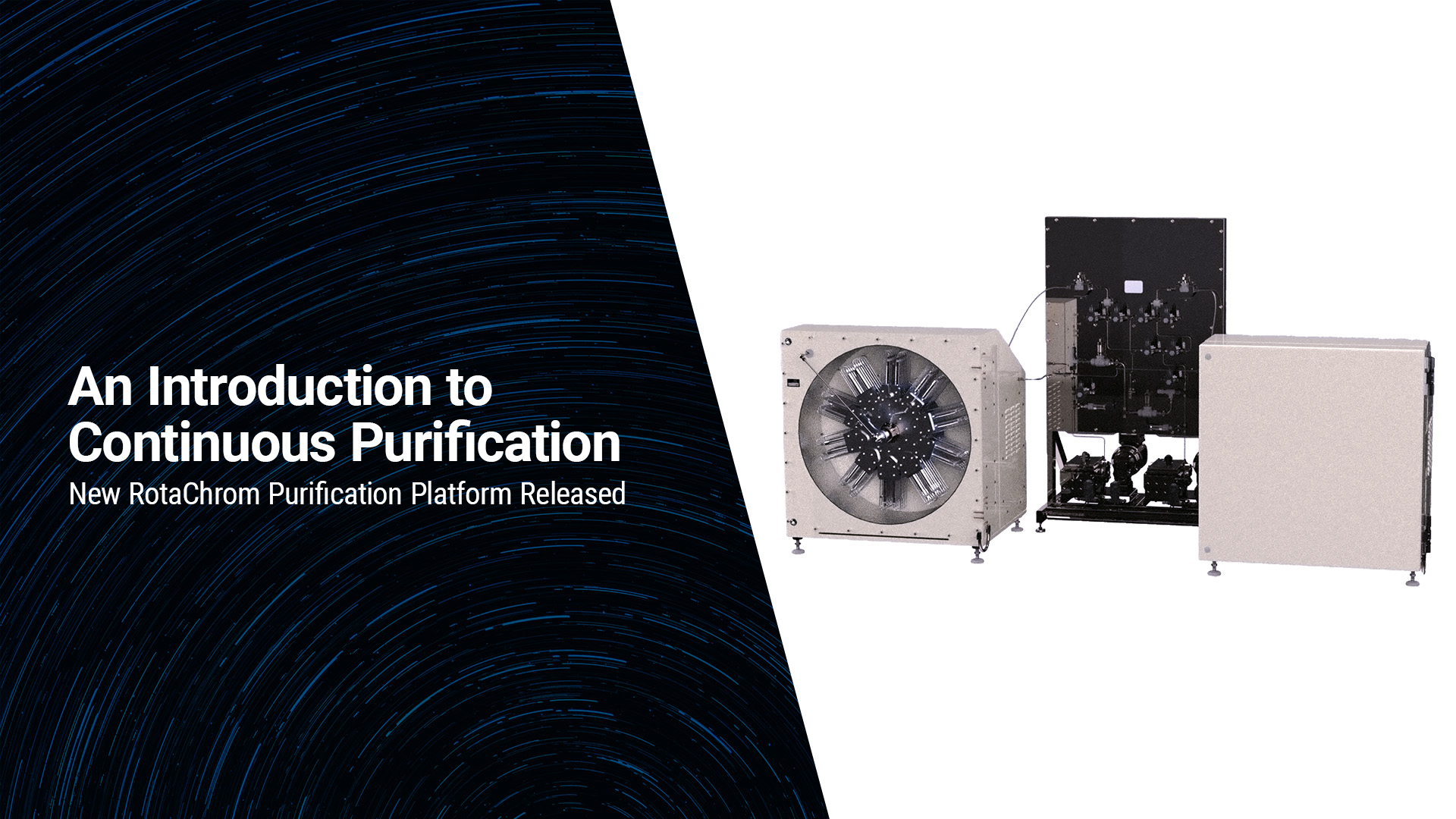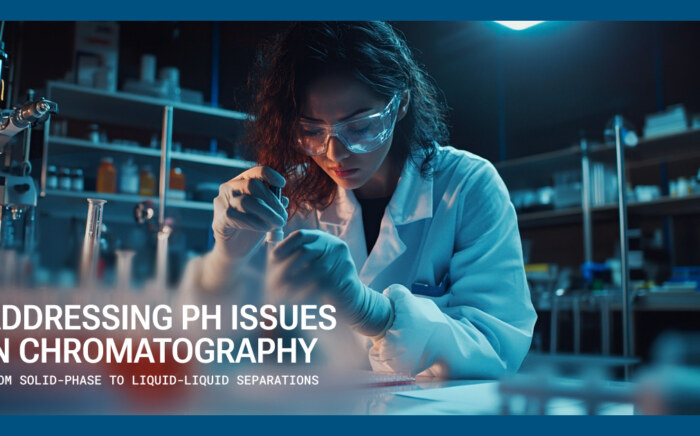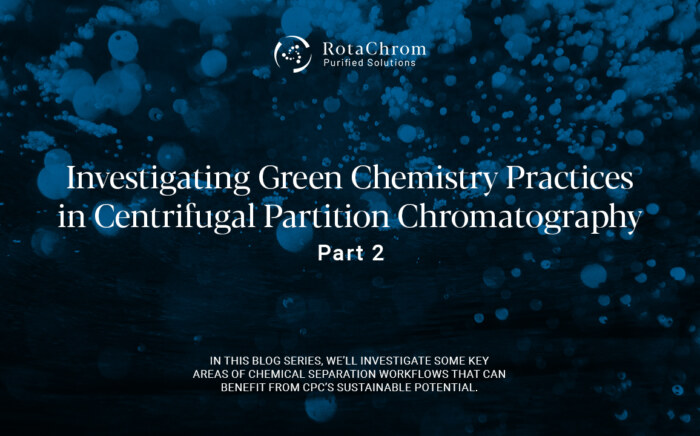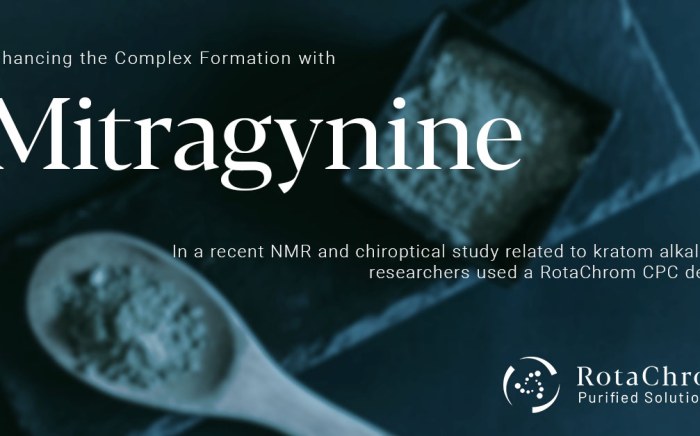Increasing separation efficiency by pH adjustment in Centrifugal Partition Chromatography
NewsCentrifugal Partition Chromatography (CPC) has taken a leap into the future with RotaChrom’s revolutionary Continuous CPC platform. Unlike traditional batch processes, this innovative technology offers a continuous, uninterrupted, and highly efficient method for separation and purification, designed to meet the demands of modern industry. Let’s delve into the details of this groundbreaking advancement and explore how it’s reshaping chromatographic techniques.
The Continuous CPC platform is a marvel of engineering, integrating two interconnected GMP-rCPC devices: a preparative unit and a control unit. The key differentiator lies in its dual-mode, dual-rotor design, enhancing throughput and efficiency with a continuous injection mode. This mode facilitates a seamless and more effective processing of samples, significantly increasing production while keeping operational costs low.
Continuous Purification vs. Conventional Approaches
What sets the Continuous CPC apart is its scalability and adaptability, accommodating various sizes and requirements. Compliant with GMP industrial standards for durability, this platform is robust and reliable, ensuring consistent performance even in the most demanding industrial settings. Its versatility shines in its capability to handle liquid-liquid chromatography, providing a flexible solution for diverse separation needs.
One of the standout features of the Continuous CPC is its on-demand solvent handling system, customizable to specific industrial standards. This not only simplifies chromatographic operations but also optimizes solvent usage, aligning with sustainability goals and reducing the environmental impact.
The transition from batch to continuous processing marks a significant stride in the chromatography landscape. Batch processes, while effective, are confined to single production runs, requiring restarts for new cycles. Continuous processing, on the other hand, ensures an uninterrupted flow of raw materials and a steady outflow of the product. This streamlines operations, making it ideal for high-demand scenarios and compatible with various continuous technologies.
Benefits of Continuous Production
The benefits of continuous manufacturing are profound.
- It helps to facilitate a smoother transition to higher production volumes by eliminating batch-related constraints
- It minimizes both capital and operational expenditures
- The absence of frequent start-ups and shutdowns reduces waste and improves overall resource utilization, minimizing solvent consumption and enabling effective recycling.
Moreover, automation plays a pivotal role in enhancing efficiency and reducing human errors in continuous manufacturing. Predictive maintenance techniques optimize equipment lifespan and prevent downtime, ensuring a seamless production flow. Additionally, the considerably smaller footprint of continuous manufacturing equipment optimizes space utilization within facilities.
How It Works
At the heart of the Continuous CPC platform lies a dynamic system with two connected rotors and four pumps. This configuration enables continuous or semi-continuous operation through a repeating process. Mixture introduction between the two rotors occurs continuously, leading to the collection of two products at opposite ends of the system.
Each cycle comprises two distinct steps, resembling the ascending and descending elution steps in traditional CPC separation modes. The mobile phase and its flow direction differentiate these steps, enabling the dissolution of components to be separated within the respective mobile phase. This design aligns with other high-throughput separation technologies like Simulated Moving Bed (SMB), making it a powerful tool for continuous separation of binary mixtures.
Whether referred to as Sequential CPC (sCPC), True Moving Bed (TMB), Trapping MDM, or “intermittent” CCC, this groundbreaking system is reshaping chromatography. RotaChrom’s Continuous CPC platform is a testament to innovation, promising a future where chromatographic techniques seamlessly integrate with continuous manufacturing, advancing industries and catalyzing progress.
GMP-Compliant Standards
RotaChrom’s Continuous Centrifugal Partition Chromatography (Continuous CPC) platform is a continuous, multiple dual-mode, dual-rotor CPC platform. It consists of two interconnected rCPC devices, a preparative unit, and the control unit. It’s highly scalable, adaptable to various sizes and requirements, and built with robustness in mind, meeting industrial standards for durability.
- The device is exceptionally versatile, making it adept at handling liquid-liquid chromatography
- It incorporates an on-demand solvent handling system that can be tailored to specific industrial standards.
- It enhances throughput with its continuous injection mode, allowing for more efficient sample processing.
RotaChrom ensures that its device complies with cleaning validation and cleaning standards in line with GMP directives:
- The Continuous CPC is explosion-proof, suitable for installation in rooms classified as ATEX/IECEx Zone 2.
- The electrical cabinet comes pre-certified for added safety assurance.
- All wetted components are constructed from high-quality materials like 316L/1.4404 stainless steel or PEEK
Further compliance data:
- Cleaning validation and cleaning methods are customized to your platform, in accordance with cGMP directives. Reference: (FDA: validation of Cleaning Process – Guideline (7/93); FDA Section 211.67 in 21 CFR ; Eudralex Volume 4. Chapter 3.: Premises and Equipment; Eudralex Volume 4. Annex 15. Point 10.)
- The Dual Rotor CPC system is intrinsically safe and can be placed in ATEX/IECEx Zone 2 environments. The electrical cabinet comes pre-certified.
- All stainless steel wetted components are constructed from AISI 316L/1.4404 stainless steel with EN 10204 1. certificates or PEEK for maximum durability and reliability.
- All other wetted components come with FDA 21 CFR 177.2600 certificates,which is a must for pharmaceutical production.
- The equipment comes with a software solution with qualification and testing documents available that are designed for FDA 21 CFR part 11, GAMP 5 and EUDRALEX Volume 4., Annex 11. compliance.
- Complete qualification flowchart and process with high quality documentation based on EUDRALEX Volume 4., Annex 15 and Annex 11., and FDA 21 CFR part 11. Requirements (DQ, FAT, IQ, OQ and PV process and documentation) provided.
- Complete traceability for all parts and processes.
Further Resources
To learn more about natural extracts, CPC and chromatography in general, click any of the links below.



